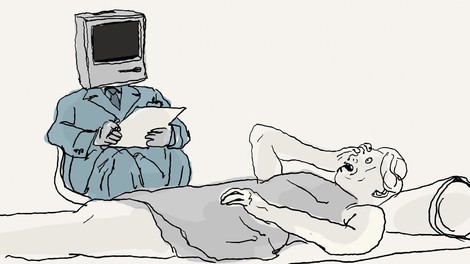Your podcast discovery platform
Curious minds select the most fascinating podcasts from around the world. Discover hand-piqd audio recommendations on your favorite topics.

piqer for: Global finds Technology and society
Prague-based media development worker from Poland with a journalistic background. Previously worked on digital issues in Brussels. Piqs about digital issues, digital rights, data protection, new trends in journalism and anything else that grabs my attention.
Is Technology Threatening Our Humanity?
Do you remember the Furbys, those little fluffy robotic toys that looked like a hybrid of Mogwai and Gremlin? Released in the 90s, they were the first major successful attempt at creating a robot toy that could blink, talk and even sound scared when held upside down. All this to appeal to human beings’ innate sense of compassion. With 14 million Furbies sold in 1999 alone, I guess it's safe to say that it worked.
Radiolab tries to explore our emotional connection to robots, by comparing levels of compassion towards a Barbie, a hamster named Gerbie, and a Furby displayed by five kids invited to their studio. This little test opens perhaps more ethically loaded questions related to human empathy: Is it ok to torture a robot? And what does it say about us?
But that's not the only test that Radiolab runs. The podcast starts with a live show “Robert or Robot?”, in which hosts Jad Abumrad and Robert Krulwich conduct a little Turing test to see if the audience can spot a chatbot and—spoiler alert—40% of the audience gets fooled, thereby surpassing Turing's 30% threshold.
Although both tests do not follow a scientific method (it's a "really unscientific super sloppy experiment", as the host calls it), they vividly illustrate the role the robots play in our lives and the effects they’re having on us. "As the line between technology and humanity becomes blurrier (...) are we becoming more or less human?" the hosts try to explore.
Despite being more than one hour in total, the podcast is worth listening to to the end. The show finishes with a powerful story on the use of Virtual Reality in therapy (which apparently was so moving that it made some people cry), showing in juxtapose "that there are ways to use technology in a way that doesn't sort of distance us but in a way that sort of enables us to be more fully human."
